Starting a new house can be challenging, and it's worth considering whether to paint or stain your wood, especially your deck area. A house made of wood looks great, but before staining, you must consider the pros and cons of doing so. Costs make a big difference when it comes to staining or painting, so let's get into the details of this subject.
Stained decks retain the grain, color, and texture of natural wood. The high-quality stain penetrates the wood grain, protecting it from moisture, and keeping repair and replacement costs to a minimum. Most importantly, staining the wood accentuates the overall beauty and character of the wood, making it stand out with its smooth finish.
However, the downside of wood stain is that it lasts for several years before reapplication. Some hardwoods are difficult to stain, making the finished product look uneven. Finally, coating preservatives are required to protect the natural wood color, grain, and other sanding techniques of these types of wood.
In addition to considering the pros and cons of staining decks, we may also have to deliberate which wood is suitable for staining. While we are on the subject, let's also dwell on other matters as to staining a deck. Read on to learn more.
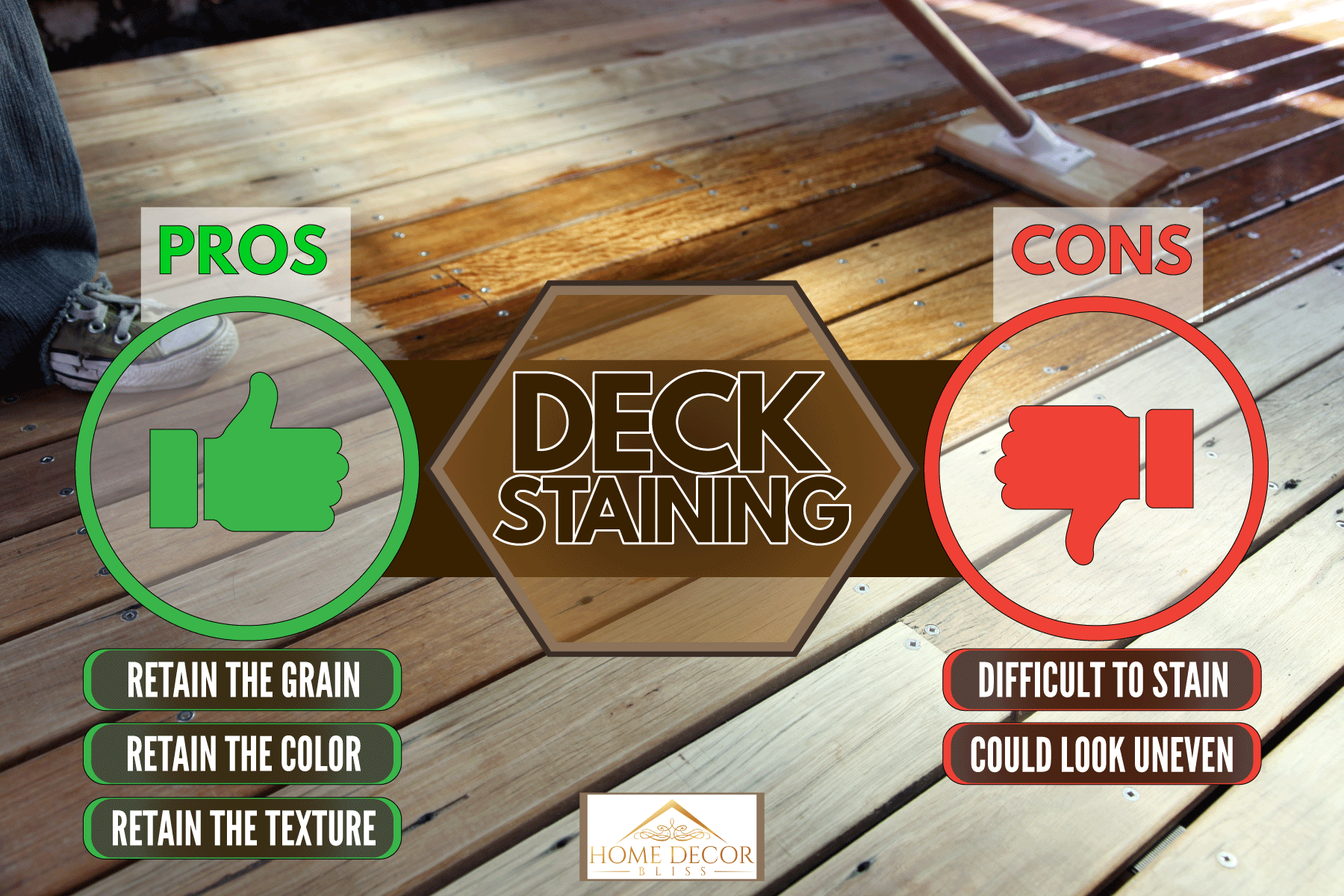
Decks: To Stain or Not To Stain
Decks are a popular trend in modern home landscaping. The most common treatment for decks is to stain them to preserve the natural grain texture of wood, maximizing the effect. However, staining a deck is not that simple, and there are many factors to consider and take into account.
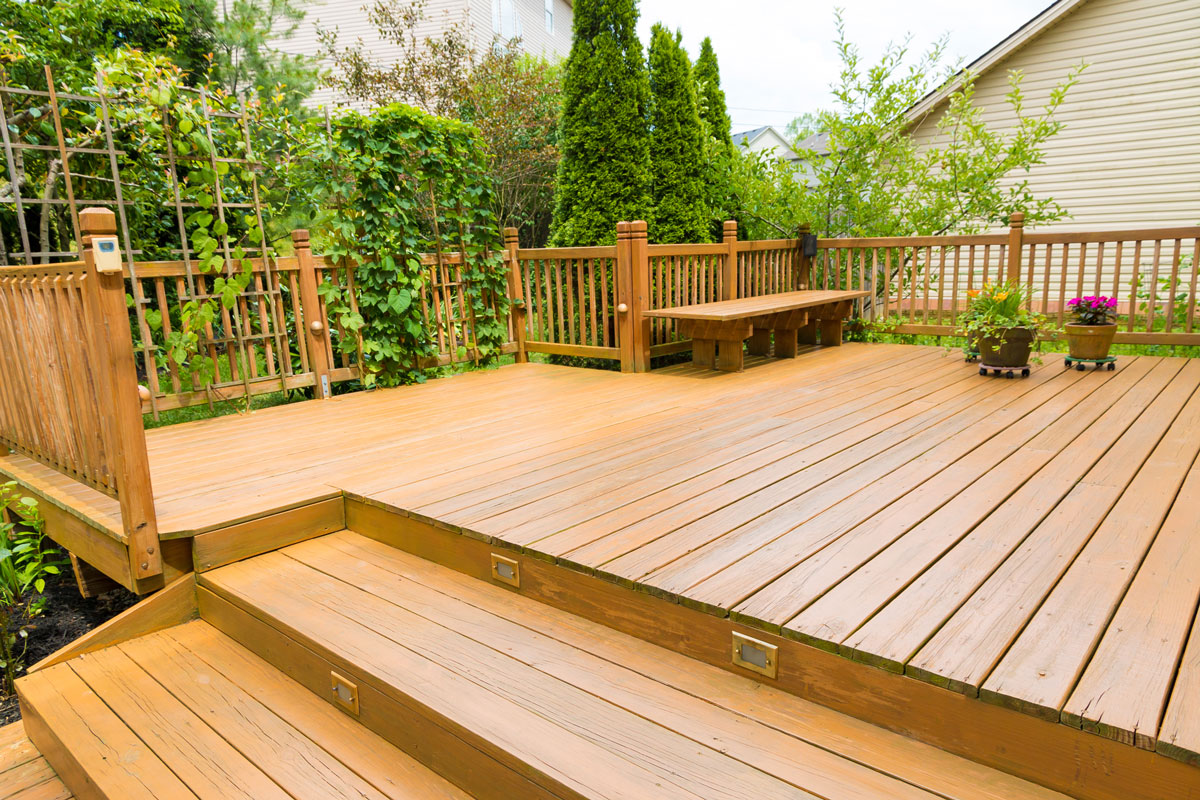
We may include affiliate links and curated AI content to highlight top design styles.
Below is a list of the pros and cons of staining your deck.
Pros of Staining Decks
1. Improves Overall Character of Natural Wood
Stain decks are a great alternative to painted wood materials and equipment. Regular staining enhances the brilliance of natural wood. Stains come in variations of shades and colors, so whether you want to preserve their natural color or enhance it, you have plenty of options.
2. Moisture Prevention Control
One of the many benefits of stained decking is its ability to control moisture and protect the natural wood. Applying a clear coat to the stain is a great way to add another protection to the wood, as it penetrates the wood by simply protecting it from rot. Plus, it minimizes cost and maintenance because you only need to recoat the deck after a few years instead of staining it.
3. Less Workload Than Painting
Painting platforms may provide a colorful contrast to your landscape, but they require more labor, cost, and effort. Stains don't need much time for the wood to absorb its mixture allowing the tint to dry extensively in just a few hours. Even more than that, they are lesser in maintenance, repairs, and replacement and aren't susceptible to sun and foot damage.
4. Sun Damage Control
Deck wood is no exception to exposure to the sun. Damage from the sun can easily cause cracks and warping in unstained wood, damaging the wood and losing its natural grain and color. However, regular maintenance and staining can prevent this, as staining protects the wood from UV penetration.
Cons of Staining Deck
1. Certain Woods Do Not Stain Well
It might be a great option to stain your deck wood for a beautiful landscape in your backyard; however, not all wood can hold a stain well. Tropical hardwoods, in particular, require another sanding technique to achieve the results; these types of woods are too dense to grip well. Furthermore, woods such as these need a skilled professional to do the job and might cost more than necessary.
2. Does Not Last Long
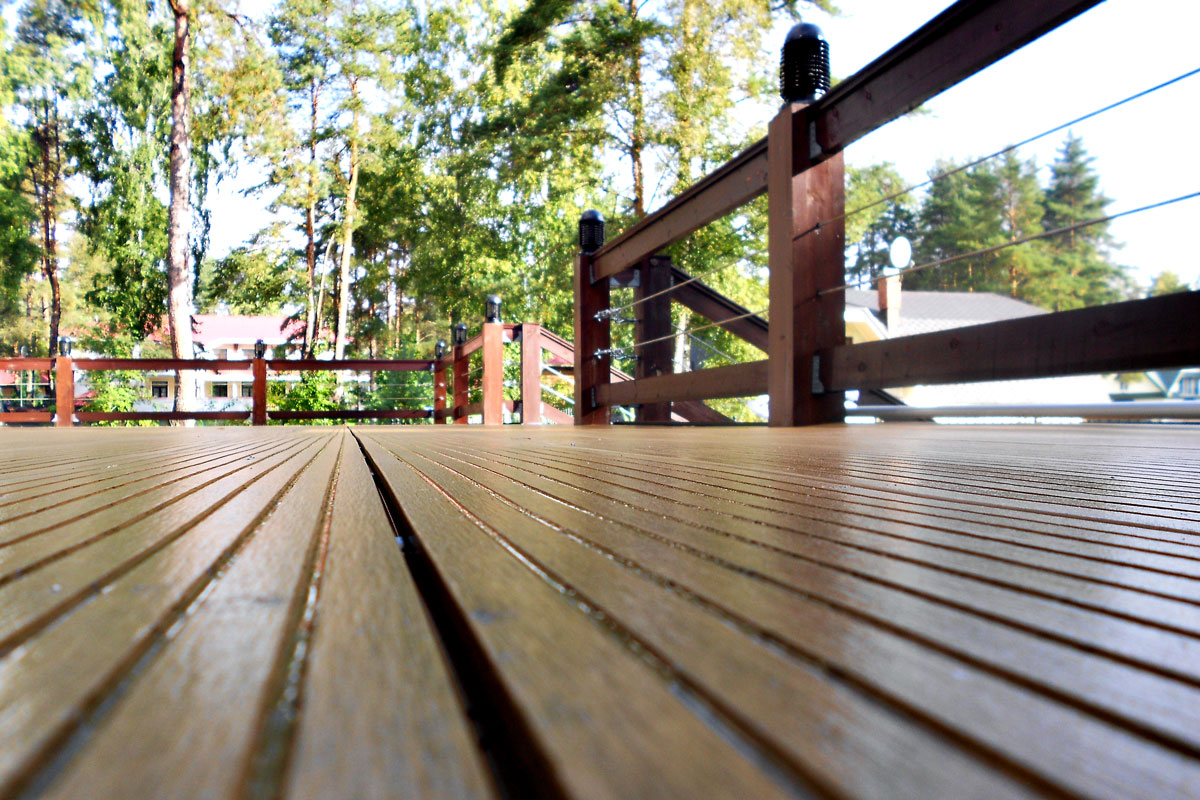
You cannot hide flaws in your deck wood over time as it can wear and tear with all the possible elements to damage it. Staining your deck wood might require you to recoat and reapply stain to maintain its integrity and preserve the natural texture and color of the wood. Also, stained decks will only last two to three years.
3. It Cannot Fill The Cracks
Stains can protect against sun damage and moisture, but they can't fill cracks and hide imperfections. You might need to sand it again and use wood fillers to fill in splintered or cracked wood. Defects are visible because stained wood only protects wood from sunlight and moisture.
Check out this Wood filler from Amazon.
Easiest and Hardest Wood to Stain
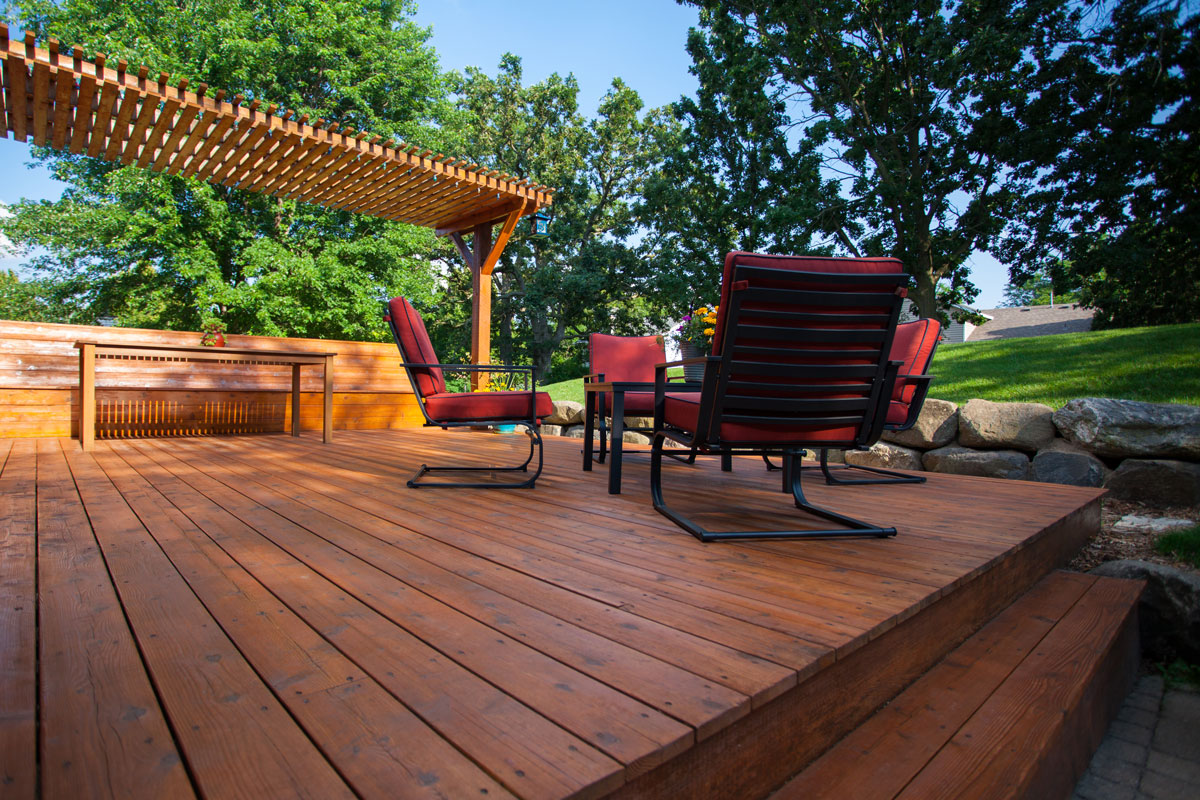
Not all types of wood can hold stains well. Some kinds are so dense that it is nearly impossible to remove defects. However, deciding on the wood to stain is a matter of preference.
Below is a list of the easiest and hardest woods to stain, giving you ideas of what to choose the next time you decide to install a deck in your home.
Easiest to Stain
- Oak
- Hickory
- Ash
- Chestnut
- Cedar
These hardwoods are the easiest to stain because of their natural grain texture and large pores that can hold stains well. Their natural wood colors are versatile and can complement any concept, design, or style. However, these hardwoods can be a bit dated due to their inherent texture, but with the correct sanding techniques, they can make the wood stand out and give it a more modern look.
Check out this sanding tool on Amazon.
Hardest to Stain
- Pine
- Birch
- Cherry
- Maple
- Poplar
The grain structure of these hardwoods is porous, allowing more stains to penetrate the wood, resulting in a blotchy and discolored texture. Poplar wood, for example, is softwood that is very hard to stain and doesn't hold color very well. Some of these woods, such as cherry, are popular as furniture and cabinets, making staining more challenging and requiring professionals to master.
Types of Wood Stain
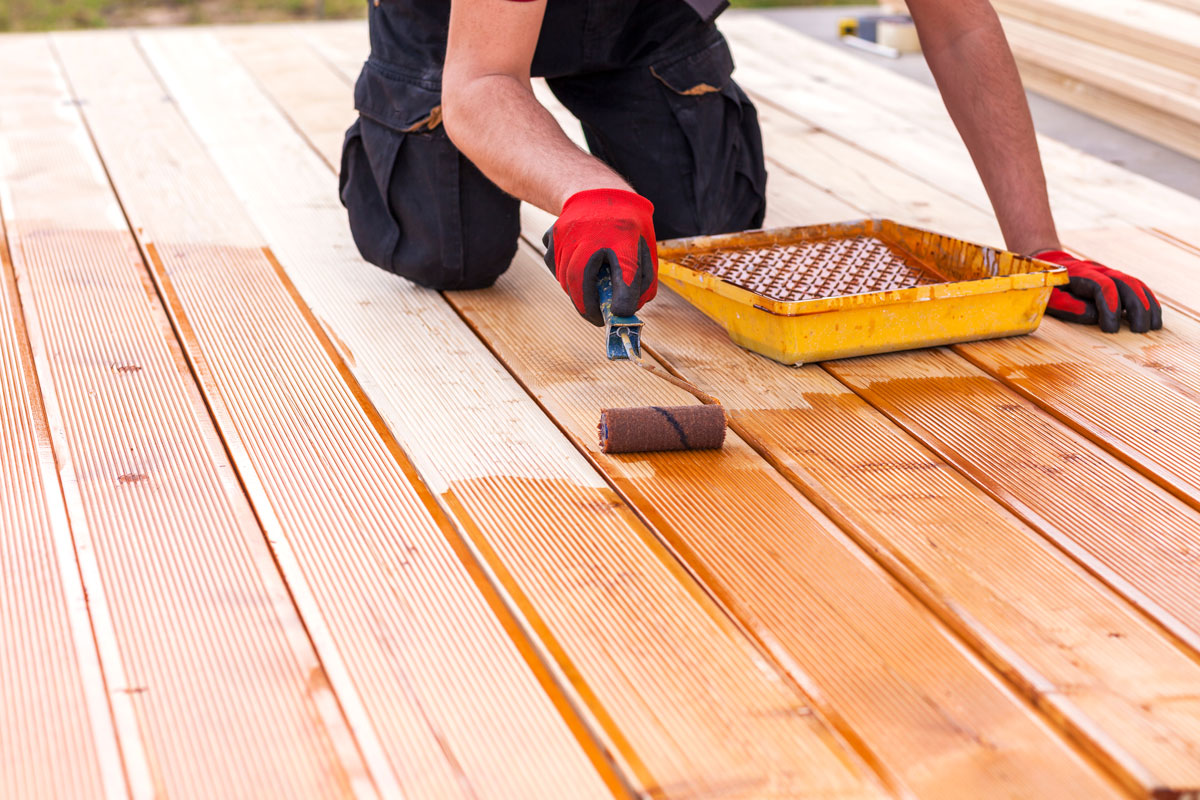
Wood stains, although thinner, work wonders on any wood, especially for landscaping your patio. There are several types of wood stains to help you choose the right kind of you wood you prefer for your deck. Stains are not a mix that works well for any wood it can come in contact with.
Here are some of the types of stains for kinds of wood of your choosing:
- Oil-based stains are the longest-lived stains and are more popular than other stains. It has an even finished, deep penetration and is very durable. However, oil-based stain takes longer to dry.
- Water-based stains use water instead of thinners capable of drying out stained wood. It is eco-friendly but has a low penetrating agent, therefore does not provide high protection against moisture and UV rays.
- Gel stain is recommended for hardwoods such as maple or cherry. Compared to water-based stains, they provide deep penetration into the wood with a porous texture and a consistent and even color.
- Metallic dye stains work best on bare wood. Known as non-grain stains, they maintain the deep color of stained wood.
- Lacquer is the most common wood stain on the market as it is available in many colors. It has an ultra-smooth finish, is very durable, and is a perfect material for professional-grade projects.
- Varnish stains are similar to oil-based stains; but dry more effortlessly and give the wood an even, natural look. These stains contain only varnish, but their protective coating is impervious to dust, dirt, and moisture.
Choosing the Right Stain
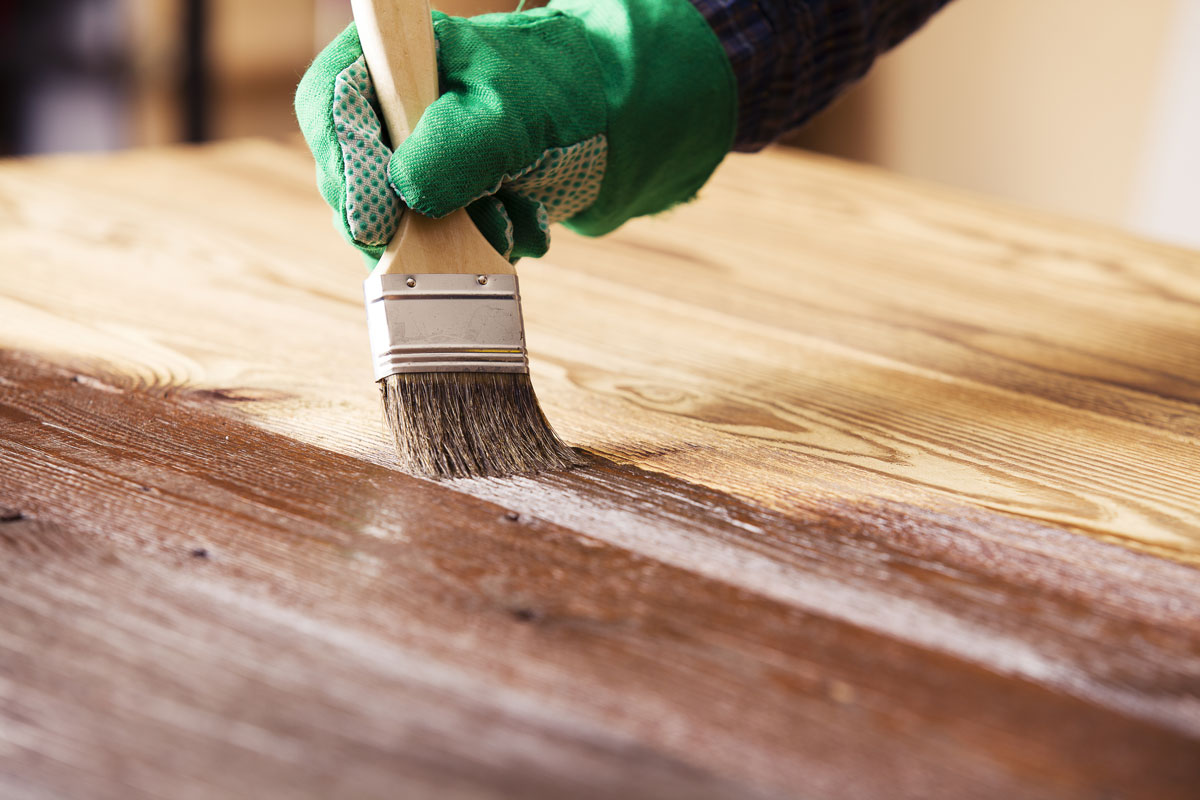
It matters what stain you use in your deck wood, as not all types of wood are suitable for staining. One factor in choosing a wood stain is the natural grain of the wood. All grains have a variety of specie, and these stains enable the wood's grain to pop out, maximizing its effect.
It is also ideal to know the undertones of your wood; so you can complement it with the right stain. What's more, know what types of wood absorb stain very well and what doesn't. Not all woods can hold stains; some absorb more, resulting in an uneven and discolored wood deck.
Check out this water-based wood stain from Amazon.
In Closing

Wood stains can make or break your deck landscape. Knowing what tint to apply to your type of wood is beneficial in reducing cost and application in the process. Wood stains have the benefit of upgrading the landscape to modern.
However, the disadvantages are just as vital as the advantages of stained decks. It is instructive to think through this before considering options for staining your deck. It might be less expensive than painting the deck, but it becomes a liability if it doesn't stain well.
Need more helpful deck ideas, read these relevant articles here:
Is A Wood Deck Cheaper Than A Concrete Patio?






